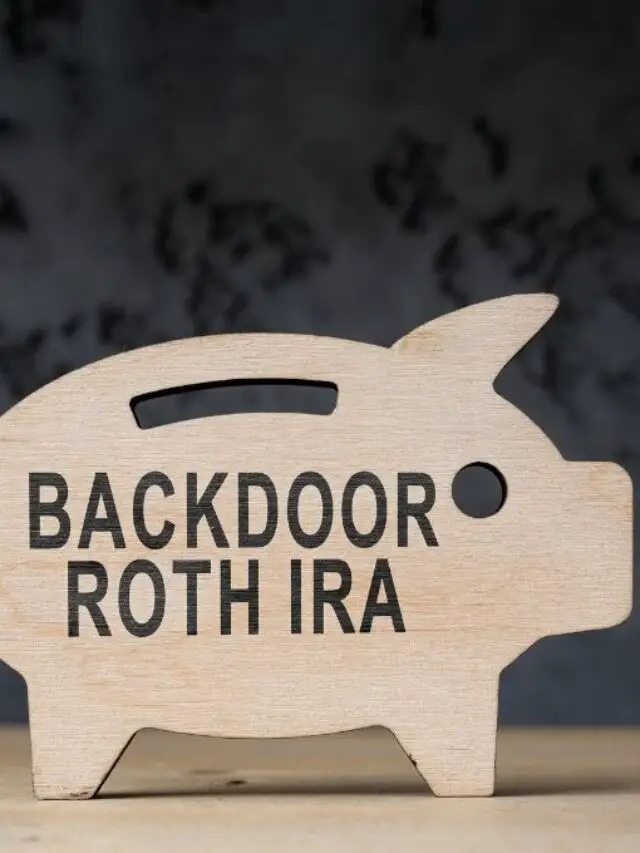Fixed income bond funds are a cornerstone of diversified investment portfolios. These financial instruments offer a haven of stability and a consistent stream of income, making them indispensable in achieving financial objectives. In this article, we’ll embark on a comprehensive exploration of fixed-income bond funds, delving into their various types, elucidating the manifold benefits they offer, and unveiling strategies to optimize returns.
Table of Contents
| Key Takeaways | |
|---|---|
| ⇝ | Variety of Bonds: Fixed income bond funds include different types, such as Government, Corporate, and Mortgage-Backed Securities, each with its own risk and return profile. |
| ⇝ | Stable Income: These funds generate a consistent revenue stream, making them ideal for retirees and those desiring steady cash flow. |
| ⇝ | Risk Management: They act as a cushion against market volatility, serving as a more stable investment vehicle. |
| ⇝ | Strategic Planning: Maximizing returns requires a well-devised strategy, from selecting the fund’s duration to deciding between active and passive management. |
Types of Fixed Income Bond Funds
Government Bonds
When it comes to fixed income bond funds, government bonds take center stage. This category branches into Treasury Bonds, backed by the unwavering might of the U.S. government, and Municipal Bonds, issued by local governments to fund public ventures. Treasury Bonds are the epitome of safety, while Municipal Bonds, offering slightly higher yields, come with a touch more risk.
Corporate Bonds
Corporate bonds constitute another crucial facet of fixed income bond funds. They encompass Investment-Grade Bonds, secured by financially robust corporations, and High-Yield Bonds, often dubbed junk bonds, owing to their higher yields and relatively lower credit ratings.
Mortgage-Backed Securities
Mortgage-backed securities, an intriguing inclusion in fixed income bond funds, represent bundles of home mortgages sold to investors. They provide an unconventional gateway to real estate market participation via fixed-income channels.
Benefits of Investing in Fixed Income Bond Funds
Stability and Consistency
The hallmark of fixed income bond funds is their unwavering stability. These financial instruments yield a dependable income stream through interest payments and demonstrate resilience in the face of market tumult.
Regular Income Streams
Fixed income bond funds serve as a reliable source of income, particularly alluring to retirees and individuals seeking predictability in their cash flow.
Risk Mitigation
When stock markets experience turbulence, fixed income bond funds often shine as a safe haven, offering a buffer against economic uncertainties.
Strategies for Maximizing Returns
Embarking on a journey to maximize returns with fixed income bond funds requires a well-thought-out approach. Here are key strategies to navigate this financial landscape:
Duration Matching
- Align the fund’s duration with your investment goals.
- Longer durations yield higher returns but carry greater interest rate risk.
- Shorter durations provide more stability but lower yields.
Sector Allocation
- Diversify across various sectors such as government, corporate, and mortgage-backed securities.
- Spread risk and optimize returns by carefully selecting sectors based on market conditions.
Active vs. Passive Management
- Decide between actively managed and passive index funds.
- Active management offers the potential for higher returns but comes with higher fees.
- Passive funds track indices, offering lower fees but potentially lower returns.
Let’s illustrate these strategies with a comparison table:
| Strategy | Advantages | Considerations |
| Duration Matching | Maximizes returns according to risk appetite | Requires ongoing monitoring |
| Sector Allocation | Diversifies risk and enhances returns | Requires research and expertise |
| Active vs. Passive | Potential for higher returns | Management fees and risk tolerance |
| Useful Tip |
|---|
| Don’t just set and forget your investment. Periodic revisits to your fund selection and rebalancing in accordance with market conditions can elevate your returns. |
Risks and Considerations
While fixed income bond funds offer a myriad of benefits, they are not without risks. Understanding these risks is crucial for informed investment decisions:
Interest Rate Risk
- As interest rates rise, bond prices fall, affecting the fund’s value.
- Mitigation: Align the fund’s duration with rate expectations.
Credit Risk
- Default risk from issuers with lower creditworthiness.
- Mitigation: Choose bonds carefully and diversify.
Inflation Risk
- Inflation erodes the real value of fixed-interest payments.
- Mitigation: Consider Treasury Inflation-Protected Securities (TIPS).
Let’s emphasize the importance of these considerations with a real-world example:
Imagine an investor who, during a period of rising interest rates, held long-duration fixed-income bond funds. As rates increased, the value of the funds declined significantly, resulting in lower returns.
| Useful Tip |
|---|
| Always keep an eye on inflation. Treasury Inflation-Protected Securities (TIPS) can offer an effective hedge to guard your fixed income bond funds against erosion of real value. |
Tips for Choosing the Right Fund
Selecting the ideal fixed income bond fund for your investment objectives requires careful consideration. Here are some invaluable tips to guide you through the selection process:
Research and Due Diligence
- Dive deep into fund prospectuses and historical performance data.
- Evaluate the fund manager’s track record and strategy.
Consideration of Investment Goals
- Align your fund choice with your financial objectives and risk tolerance.
- Determine whether you seek income, capital preservation, or a balance of both.
Professional Advice
- Consult with a financial advisor for personalized guidance.
- An expert can help tailor your fixed income bond fund selection to your unique circumstances.
Remember, the key to success lies in aligning your investment strategy with your specific needs and preferences.
Conclusion
In conclusion, fixed-income bond funds stand as stalwarts in the realm of investments, offering stability, reliable income, and strategic opportunities for growth. They come in various forms, each with its own risk-reward profile, allowing investors to tailor their portfolios to their liking.
By employing strategies like duration matching, sector allocation, and thoughtful consideration of active vs. passive management, you can unlock the full potential of these funds. However, it’s essential to remain vigilant about the associated risks, such as interest rate fluctuations, credit defaults, and inflation erosion.
Frequently Asked Questions (FAQs)
- What’s the minimum amount I need to start investing in fixed income bond funds?
The minimum investment required to get started with fixed income bond funds can vary widely depending on the fund provider. You’ll typically find minimum initial investment thresholds ranging from $1,000 to $5,000. However, it’s worth noting that some funds offer lower minimums or may waive them for specific account types, like retirement plans. - Can I experience losses when investing in fixed income bond funds?
Absolutely, it’s possible to encounter losses when investing in fixed-income bond funds. The primary culprit here is interest rate risk, which can cause the fund’s value to slide when interest rates start climbing. Additionally, credit risk and the ever-sneaky inflation risk can also have an impact. But don’t fret; diversification and careful selection can help cushion those blows. - Are fixed income bond funds suitable for long-term investment objectives?
Fixed income bond funds are quite versatile and can be suitable for both short-term and long-term investment goals. Their knack for providing stability and a reliable income stream makes them an attractive choice, especially for retirees or folks seeking a steady cash flow. However, the decision ultimately hinges on your unique financial objectives and your comfort with risk. - Do municipal bond funds offer any tax perks?
You bet! Municipal bond funds come with some nifty tax advantages. The interest income generated by municipal bonds is often as tax-free as a sunny day at the federal level. In some cases, it can even be tax-exempt at the state and local levels, particularly if you reside in the state that issued the bond. - What role do credit ratings play in fixed income bond funds?
Credit ratings are like the referees of the bond world; they judge the creditworthiness of bond issuers. Fixed-income bond funds can hold bonds with varying credit ratings, and this influences their risk profile. Investment-grade bonds sport lower default risk, while the high-yield bonds with their lower ratings offer juicier yields but bring along the daring dance of higher credit risk. - How can I dig into a fixed income bond fund’s historical performance?
To take a stroll down memory lane and check out a fund’s historical performance, sift through its past returns, expense ratios, and how it measures up against benchmarks. Most fund providers serve up this treasure trove of data in their prospectuses or on their websites. Just remember, while past performance offers clues, it doesn’t hold all the secrets to the future. - Can someone break down the difference between a bond fund’s yield and total return?
Sure thing! A bond fund’s yield is like the interest it’s churning out from its underlying bonds. Total return, though, adds a dash of adventure by not just considering yield but also factoring in changes in bond prices. Yield is like the steady paycheck, but total return is the full package deal, including any twists and turns in bond prices. - Is it easy to access my cash in fixed income bond funds whenever I please?
You betcha! Fixed income bond funds are known for their liquidity, which means you can hop on the buy or sell train any business day. However, it’s wise to keep an eye out for potential fees or any redemption rules set by the fund provider. - What exactly are Treasury Inflation-Protected Securities (TIPS), and how do they tackle inflation risk?
Ah, TIPS, the superheroes of the bond world! Treasury Inflation-Protected Securities are like magic beans that grow with inflation. They adjust their principal value based on changes in the Consumer Price Index (CPI), ensuring that your investment doesn’t get eaten away by inflation’s hungry jaws. They’re the trusty shield against inflation’s sneaky ways. - Will there be tax consequences when I decide to part ways with my fixed income bond fund shares?
You’ve got to watch out for the taxman! Selling your fixed income bond fund shares can have tax implications. Depending on factors like how long you’ve held the investment and how the fund performed, you might find yourself with capital gains or losses. When it comes to taxes, it’s usually a good idea to consult a tax professional who knows the ins and outs of the tax code.

Prashant Chauhan
Author @ Finance RuffleMeet Prashant Pratap Chauhan, the savvy founder behind Finance Ruffle, a hub for sharp financial insights and expert analysis in the realm of finance blogging.









